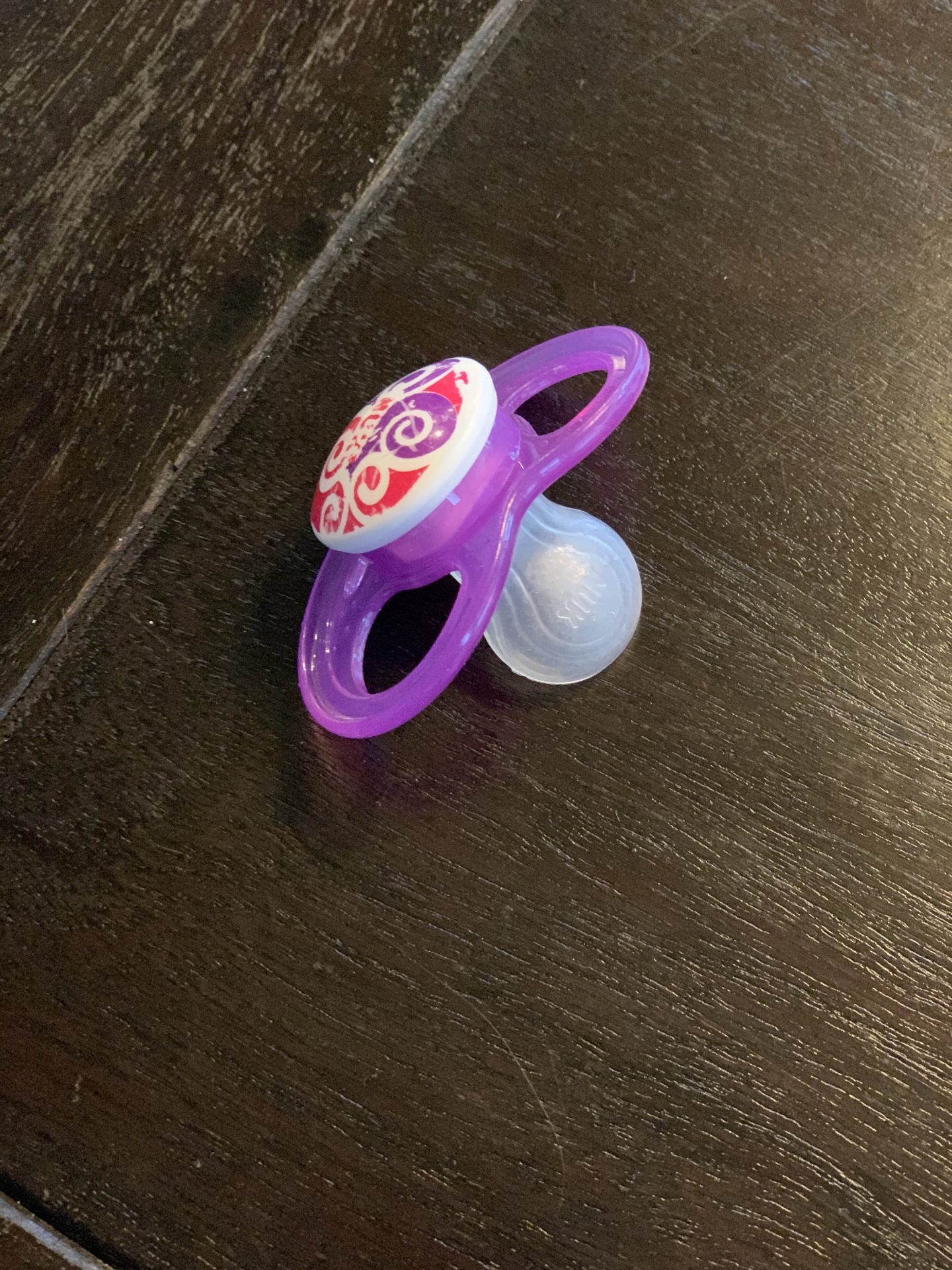Pacifier Weaning

Written on January 14, 2020
Every parent who has a child who loves their pacifier dreads the day when it’s time to start pacifier weaning. Here are 8 ideas to help you navigate this big transition!
1. Prepare your child for the eventuality that pacifiers are not forever.
Bring up pacifier weaning whenever your child asks for the pacifier or reaches for it. Talk about how one day soon the pacifier will go away. There are some great books to read with your littles about the transition out of pacifiers – “Pacifiers are not forever” – By Elizabeth Verdick, “Bea gives up her pacifier- the book that makes kids want to move on from pacifiers!” – By Jenny Album, & “Florrie the paci fairy “– By Mr. Anthony J Crosbie.
2. Replace the pacifier with a more appropriate means for oral stimulation.
The act of sucking is very calming and soothing for babies. This need for your child to calm with oral stimulation can carry over into the toddler and childhood years. You may want to consider replacing pacifier use with another appropriate mouth behavior. Taking sips of water, chewing on a Chewy tubes, biting a Chewing necklace , using the Z-grabber, or chewing on a z-vibe are great alternatives. In her book, “Nobody ever to me (or my mother) that!” infant feeding expert Diane Bahr recommends gently offering the replacement item whenever your child asks for the pacifier. Focus on giving your child attention and praise when they are using an appropriate replacement item in place of the pacifier.
3. Consider a visit from the pacifier fairy.
In this strategy, the pacifier “fairy” visits at night time when your child is asleep. The “fairy” collects all of the pacifiers in the house and gives them to little babies who need them. As a thank you, the pacifier “fairy” will leave a present. This gift will be a new transitional item to provide calm and comfort as they work through pacifier weaning.
4. Change the feel of the pacifier.
Using this method, parents change the shape or structure of the pacifier so that it no longer works the way the child is used to. This is achieved by cutting a hole in the pacifier so the child is no longer able to suck on the pacifier very efficiently. You can progressively cut a larger hole, or cut the tip off the pacifier all at one time. It is important to make sure the pacifier does not have any pieces that can come off into the child’s mouth or be bitten off which might become a choking hazard. Parents also want to make sure the pacifier is not getting dirty as it will be easier to collect particles in the open nipple. More often than not a child will notice the difference right away and will not want to use it anymore since it doesn’t work right.
5. Visit Build-a-bear
Visit Build-a-bear and talk to your child about how you are going to create a “pacifier bear”. Your child will be make a bear, and place the pacifier inside the bear so that the pacifier will be enclosed within the stuffed animal. Your child will always know that the pacifier is inside the bear and he/she will have created a new comfort item and a pleasant memory.
6. Have your child give the pacifier away
You and your child can talk about how since your child is a big kid now it’s very kind to give the pacifier away to babies who need them. You and your child decorate a bag or a box and gather all of the pacifiers in your home and place them in the container. Together you can present the box to a new baby who will need them. Encourage and praise your child all throughout the process for making a thoughtful, kind, and “big kid” decision.
7. Use a WubbaNub pacifier.
WubbaNub pacifier have a small animal attached to the end of them. Babies quickly learn to associate the stuffed animal with the comfort of the actual pacifier. When it’s time for your child to say goodbye to the pacifier you can cut the pacifier portion off and are then left with the stuffed animal portion. Your child will still be able to seek comfort from the stuffed animal that was attached to the pacifier long after the pacifier is gone.
8. Go cold turkey.
Sometimes after preparing our children for it we just need to take the pacifier away. The days following might be rough, but be loving, attentive, and consistent and the attachment to the pacifier should fade.
Pacifier weaning is a major life transition for our little ones. No matter what methods you choose to get rid of the paci remember your child will need extra soothing, quality time, attention, love, comfort, and consistency from his/her family to help him/her feel safe and secure during this time of change. If you are struggling with pacifier weaning or have concerns regarding feeding or speech development please follow the link to schedule a free screening at BDI Playhouse. BDI Playhouse Screening Registration
Written by: Amy Stumpf, M.S., CCC-SLP/L, CLEC
